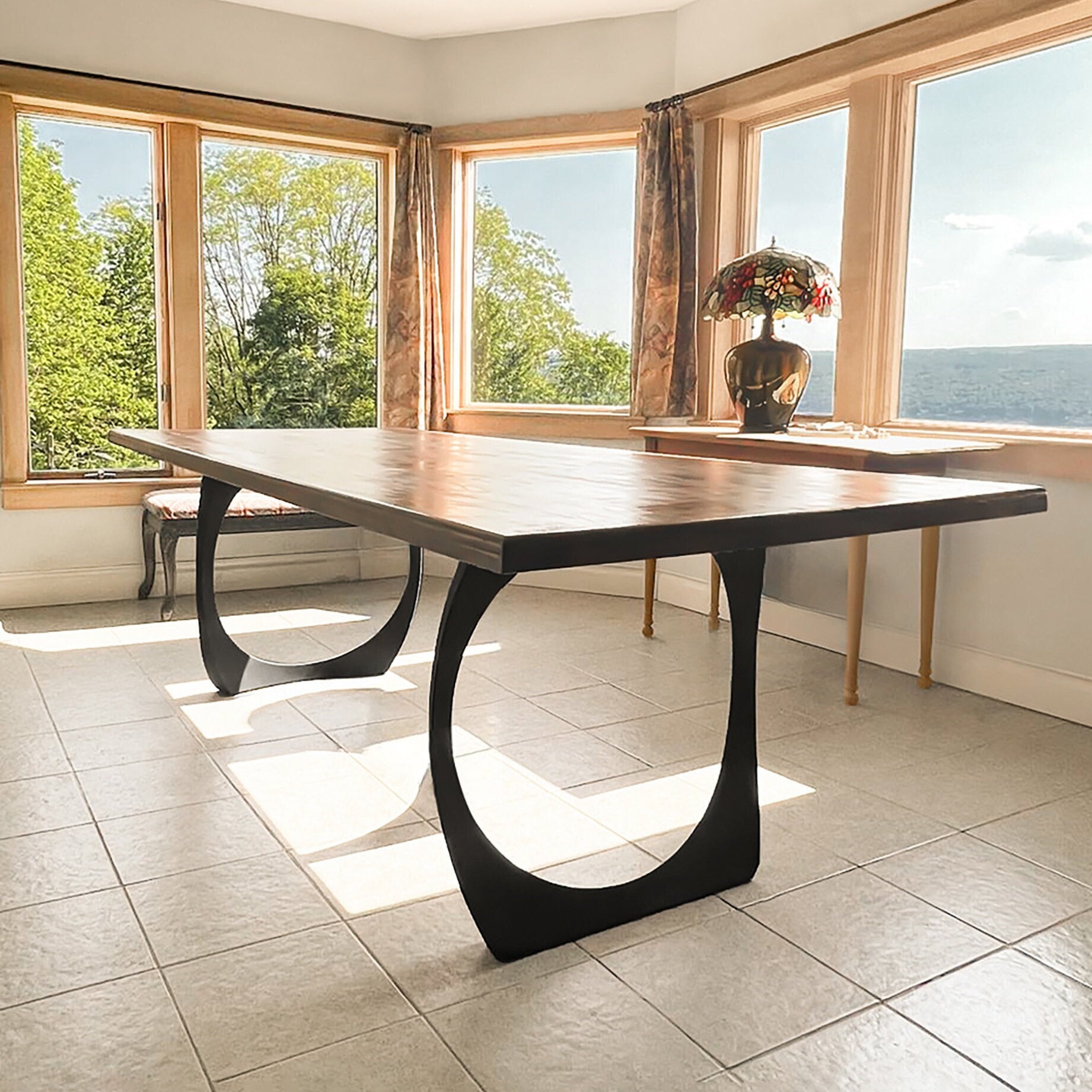Selecting the Perfect Dining Table: What Styles Job Best for Your Home?
Picking the optimal eating table for your home can be a nuanced procedure that balances visual appeals and capability. To navigate these selections successfully and find a table that truly matches your home, consider the complying with aspects in information.
Examining Your Space
Reviewing the measurements and layout of your dining location is an important first action in picking the ideal table. Begin by determining the length and size of the room, accounting for doorways, home windows, and various other architectural features that can influence table placement. This makes certain that your table not only fits yet likewise allows for comfy activity around it.
Take into consideration the variety of people you generally entertain. A table needs to suit your home's daily demands while providing sufficient versatility for occasional visitors. Generally of thumb, allocate a minimum of 24 inches of table size each to ensure a comfortable dining experience.
It's additionally necessary to keep proper clearance around the table. Preferably, there ought to be at least 36 inches between the table edge and walls or various other furnishings, making it possible for easy accessibility and activity. For areas where chairs with arms or additional storage space devices like buffets are included, enhancing this clearance to 48 inches is a good idea.
Illumination and atmosphere play significant duties also. Make certain that your table aligns with existing lights fixtures or prepare for appropriate illumination solutions. This thorough spatial evaluation warranties that your eating table not only fits literally but additionally harmonizes with your area's general capability and aesthetic.
Popular Table Styles

Standard table typically feature ornate details, curved legs, and abundant timber surfaces, evoking a sense of timeless style. They are excellent for homes with timeless decoration or those seeking to add a touch of sophistication to their eating location.
Modern dining tables prioritize simpleness and tidy lines, typically incorporating materials like glass and steel. These tables are suitable for contemporary spaces, giving a smooth and clean look that enhances minimalist design ideologies.
Rustic eating tables, on the other hand, stress natural materials and a handmade appearance - dining room table legs. They often include reclaimed timber and a distressed finish, developing a warm and welcoming environment. These tables function well in farmhouse-style homes or those looking for a cozy, natural feel
Industrial eating tables integrate basic materials such as metal and timber, commonly showcasing an utilitarian aesthetic. This style is fit for lofts or urban spaces, adding a touch of sturdy beauty and longevity to the eating experience.
Each style supplies unique benefits, making it necessary to choose one that lines up with your home's overall style and your individual preferences.
Product Selections
When choosing an eating table, the choice of product plays a crucial function in determining both the table's looks and functionality. Wood, steel, glass, and composite products each offer special advantages and challenges, making it critical to align the product with your home's style and lifestyle requirements.
Timber is a classic and versatile choice, readily available in selections such as oak, walnut, and mahogany. Known for its sturdiness and heat, timber additional hints complements both conventional and contemporary insides. Nonetheless, it requires regular maintenance to stop scrapes and bending.
Metal tables, commonly crafted from stainless-steel, light weight aluminum, or functioned iron, are praised for their modern appeal and robustness. They are particularly suited for industrial or minimalist settings but can be prone to dents and may feel cold to the touch.
Glass dining tables bring an air of elegance and openness, ideal for smaller sized rooms as they develop an impression of even more space. While simple to clean, glass can be vulnerable to smudges and requires careful handling to stay clear of chips and splits.
Composite products, such as MDF and plywood, deal economical additional hints and adjustable services, though they may do not have the long life of all-natural materials. Selecting the right product guarantees your table is both a functional asset and an aesthetic pleasure.
Sizes And Shape Factors To Consider
After identifying the ideal material for your eating table, the next factor to consider is selecting the ideal shape and dimension to match your area. Alternatively, round tables cultivate a sense of affection and are excellent for smaller eating areas, motivating discussion by getting rid of edges and making everyone feel just as included.
As a regulation of thumb, allot Full Report at the very least 24 inches of table size per individual to make certain comfy eating. Furthermore, think about the table's clearance area: there must be at the very least 36 inches between the table edge and the walls or other furniture. Prolonging tables provide versatility if you frequently host bigger celebrations, giving added seats when needed without occupying extra room daily.
Matching Your Style
Selecting an eating table that harmonizes with your existing decoration is pivotal in producing a cohesive and welcoming space. A streamlined, minimalist table with clean lines is excellent for a contemporary home, while a vintage, luxuriant table suits a much more typical setting.
If your design includes cozy tones and all-natural products, take into consideration a wooden table to enhance the organic feel. On the other hand, a glass or steel table might be extra ideal in a space dominated by awesome colors and commercial elements.
Structure plays a critical duty too. A rough-hewn, reclaimed timber table can include character to a rustic area, while a sleek marble surface can elevate an extravagant dining location. Take into consideration the scale and proportion of the table in connection to the room size and existing furnishings. A well-matched eating table not just improves visual charm but also improves the total eating experience.

Conclusion
Choosing the ideal dining table necessitates mindful factor to consider of room, design, products, shape, and dimension. Conventional tables enhance traditional insides with rich timber finishes, while modern-day tables match contemporary setups through glass and metal.